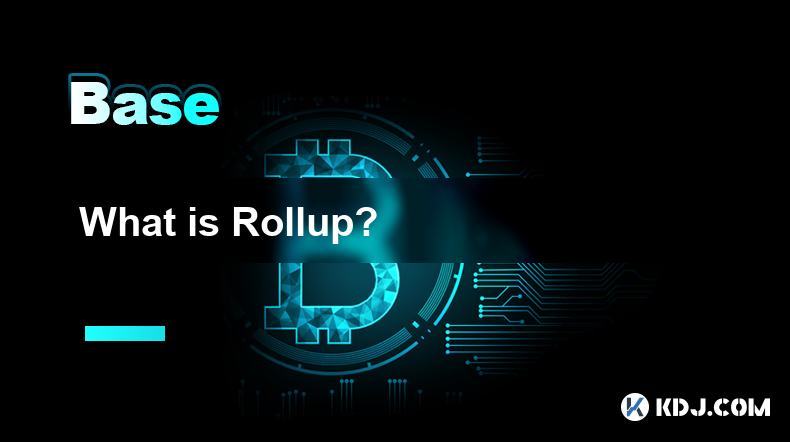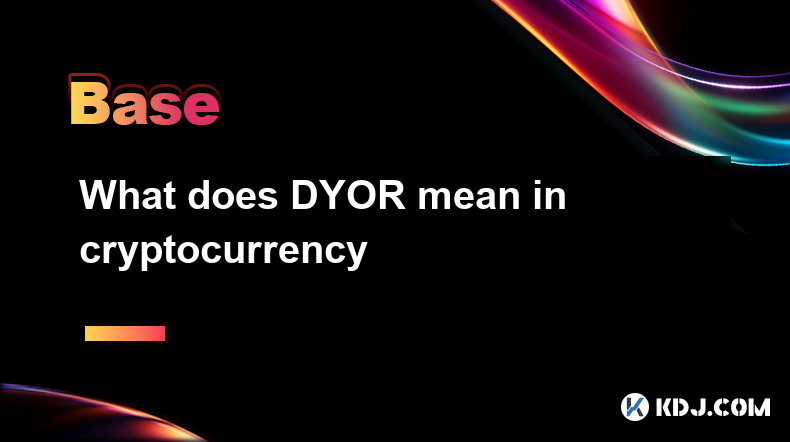-
 Bitcoin
Bitcoin $84,825.3915
0.52% -
 Ethereum
Ethereum $1,582.2327
-0.21% -
 Tether USDt
Tether USDt $1.0001
0.02% -
 XRP
XRP $2.0656
-1.54% -
 BNB
BNB $589.9455
0.88% -
 Solana
Solana $133.9496
1.43% -
 USDC
USDC $0.9999
0.00% -
 TRON
TRON $0.2479
-0.36% -
 Dogecoin
Dogecoin $0.1555
-0.20% -
 Cardano
Cardano $0.6175
0.41% -
 UNUS SED LEO
UNUS SED LEO $9.0832
-3.49% -
 Chainlink
Chainlink $12.5115
0.61% -
 Avalanche
Avalanche $18.9560
0.46% -
 Stellar
Stellar $0.2400
1.29% -
 Toncoin
Toncoin $2.9393
0.62% -
 Shiba Inu
Shiba Inu $0.0...01177
-1.18% -
 Hedera
Hedera $0.1628
2.73% -
 Sui
Sui $2.1134
2.00% -
 Bitcoin Cash
Bitcoin Cash $335.3516
3.15% -
 Polkadot
Polkadot $3.6149
0.86% -
 Hyperliquid
Hyperliquid $16.9911
5.02% -
 Litecoin
Litecoin $74.8009
0.00% -
 Dai
Dai $1.0000
0.00% -
 Bitget Token
Bitget Token $4.3705
1.23% -
 Ethena USDe
Ethena USDe $0.9992
0.00% -
 Pi
Pi $0.6162
1.25% -
 Monero
Monero $216.3039
-0.80% -
 Uniswap
Uniswap $5.1643
-0.28% -
 Pepe
Pepe $0.0...07226
0.11% -
 OKB
OKB $50.4685
-2.19%
What is Rollup?
Rollups, as a Layer 2 scaling solution for Ethereum, overcome transaction fee bottlenecks and enhance throughput by processing transactions off-chain.
Feb 15, 2025 at 04:49 pm

Key Points
- Rollups are a Layer 2 scaling solution for Ethereum that process transactions off-chain and submit them to the Ethereum blockchain as a single, compressed transaction.
- Rollups improve scalability by reducing transaction fees and increasing transaction throughput.
- There are two main types of rollups: Optimistic rollups and Zero-Knowledge (ZK) rollups.
- Optimistic rollups assume that transactions are valid until proven otherwise, while ZK rollups provide cryptographic proof of validity.
- Rollups have the potential to significantly improve the scalability and efficiency of Ethereum.
What is Rollup?
Rollups are a Layer 2 scaling solution for Ethereum that process transactions off-chain and submit them to the Ethereum blockchain as a single, compressed transaction. This approach improves scalability by reducing transaction fees and increasing transaction throughput.
Rollups are similar to other Layer 2 solutions, such as sidechains and state channels. However, rollups have some key advantages over these other solutions.
- Scalability: Rollups can process a much higher number of transactions per second than sidechains and state channels.
- Security: Rollups inherit the security of the Ethereum blockchain.
- Interoperability: Rollups can interoperate with other Ethereum-based applications and services.
Types of Rollups
There are two main types of rollups: Optimistic rollups and Zero-Knowledge (ZK) rollups.
Optimistic Rollups
Optimistic rollups assume that transactions are valid until proven otherwise. This means that transactions are processed off-chain without any additional verification. To ensure that transactions are valid, optimistic rollups use a fraud proof mechanism. If a fraud proof is submitted, the transaction is reverted and the malicious actor is penalized.
Zero-Knowledge (ZK) Rollups
ZK rollups provide cryptographic proof of validity for transactions. This means that transactions are verified off-chain before they are submitted to the Ethereum blockchain. ZK rollups are more secure than optimistic rollups because they do not rely on a fraud proof mechanism. However, ZK rollups are also more complex to implement and can be less efficient than optimistic rollups.
Benefits of Rollups
Rollups offer a number of benefits over other Layer 2 scaling solutions.
- Scalability: Rollups can significantly improve the scalability of Ethereum by reducing transaction fees and increasing transaction throughput.
- Security: Rollups inherit the security of the Ethereum blockchain.
- Interoperability: Rollups can interoperate with other Ethereum-based applications and services.
Challenges of Rollups
Rollups are a promising scaling solution, but they also face some challenges.
- Complexity: Rollups are complex to implement and maintain.
- Security: Rollups can be vulnerable to security attacks, such as fraud proofs and ZK proofs.
Future of Rollups
Rollups are a promising scaling solution for Ethereum, and they have the potential to significantly improve the scalability and efficiency of the network. However, rollups are still under development, and there are some challenges that need to be addressed before they can be widely adopted.
FAQs
- What is the difference between a rollup and a sidechain?
Rollups and sidechains are both Layer 2 scaling solutions for Ethereum. However, there are some key differences between the two solutions. Rollups process transactions off-chain and submit them to the Ethereum blockchain as a single, compressed transaction. Sidechains, on the other hand, are independent blockchains that are connected to the Ethereum blockchain. Rollups are more scalable than sidechains, but they are also more complex to implement.
- What is the difference between an optimistic rollup and a ZK rollup?
Optimistic rollups and ZK rollups are the two main types of rollups. Optimistic rollups assume that transactions are valid until proven otherwise, while ZK rollups provide cryptographic proof of validity. Optimistic rollups are more efficient than ZK rollups, but ZK rollups are more secure.
- What are the challenges of rollups?
Rollups are still under development, and there are some challenges that need to be addressed before they can be widely adopted. These challenges include complexity, security, and interoperability.
- What is the future of rollups?
Rollups are a promising scaling solution for Ethereum, and they have the potential to significantly improve the scalability and efficiency of the network. However, rollups are still under development, and there are some challenges that need to be addressed before they can be widely adopted.
Disclaimer:info@kdj.com
The information provided is not trading advice. kdj.com does not assume any responsibility for any investments made based on the information provided in this article. Cryptocurrencies are highly volatile and it is highly recommended that you invest with caution after thorough research!
If you believe that the content used on this website infringes your copyright, please contact us immediately (info@kdj.com) and we will delete it promptly.
- Binance Coin (BNB) Could Be on the Verge of a Major Price Movement as Attention Turns to Its Upcoming Debut on Kraken
- 2025-04-18 07:25:14
- a16z Crypto Doubles Down on LayerZero, Acquiring an Additional $55M Worth of ZRO Tokens
- 2025-04-18 07:25:14
- CARDANO: SLOW CLIMB OR STALLED MOMENTUM?
- 2025-04-18 07:20:12
- Crypto markets face a busy schedule of token unlocks this week, putting traders on alert
- 2025-04-18 07:20:12
- Cryptocurrencies Are Trading Slightly Up on Thursday as Traditional Financial Markets Closed Out a Low-Volatility Week.
- 2025-04-18 07:15:13
- Bitwise Announces the Listing of Four of Its Crypto ETPs on the London Stock Exchange (LSE)
- 2025-04-18 07:15:13
Related knowledge

How the Lightning Network improves Bitcoin efficiency
Apr 17,2025 at 08:56pm
The Lightning Network represents a significant advancement in the Bitcoin ecosystem, aiming to address some of the most pressing issues related to transaction speed and cost. By enabling off-chain transactions, the Lightning Network drastically improves Bitcoin's efficiency, allowing for faster and cheaper transactions. This article will explore how the...

Analysis of the KYC process of cryptocurrency exchanges
Apr 17,2025 at 05:07pm
The Know Your Customer (KYC) process is a critical component in the operations of cryptocurrency exchanges. It serves as a regulatory measure to prevent fraud, money laundering, and other illicit activities. KYC procedures are designed to verify the identity of users and ensure compliance with financial regulations. This article delves into the various ...

What does Floor Price mean in the NFT market
Apr 17,2025 at 12:42am
The term Floor Price is a critical concept within the NFT (Non-Fungible Token) market, serving as a key indicator for both buyers and sellers. In essence, the floor price represents the lowest price at which an NFT from a particular collection is currently listed for sale on a marketplace. This price point is crucial for understanding the perceived valu...

How to understand the TVL indicator in DeFi projects
Apr 17,2025 at 03:28pm
Understanding the TVL indicator in DeFi projects is crucial for investors and enthusiasts looking to gauge the health and popularity of decentralized finance platforms. TVL, or Total Value Locked, represents the total amount of assets that are currently staked or locked in a DeFi protocol. This metric serves as a barometer for the trust and interest tha...

What does DYOR mean in cryptocurrency
Apr 17,2025 at 03:00pm
DYOR, or 'Do Your Own Research,' is a crucial mantra in the cryptocurrency community. It emphasizes the importance of individuals conducting their own thorough investigations before making any investment decisions. In the fast-paced and often volatile world of cryptocurrencies, relying solely on others' advice or the hype surrounding a particular coin c...

What is Alpha? How to find Alpha opportunities?
Apr 16,2025 at 12:42pm
What is Alpha?Alpha is a term widely used in the financial world, including the cryptocurrency market, to describe the ability of an investment to outperform a benchmark. In the context of cryptocurrencies, alpha refers to the excess return an investor achieves over the market's average return. For example, if the overall crypto market grows by 10% in a...

How the Lightning Network improves Bitcoin efficiency
Apr 17,2025 at 08:56pm
The Lightning Network represents a significant advancement in the Bitcoin ecosystem, aiming to address some of the most pressing issues related to transaction speed and cost. By enabling off-chain transactions, the Lightning Network drastically improves Bitcoin's efficiency, allowing for faster and cheaper transactions. This article will explore how the...

Analysis of the KYC process of cryptocurrency exchanges
Apr 17,2025 at 05:07pm
The Know Your Customer (KYC) process is a critical component in the operations of cryptocurrency exchanges. It serves as a regulatory measure to prevent fraud, money laundering, and other illicit activities. KYC procedures are designed to verify the identity of users and ensure compliance with financial regulations. This article delves into the various ...

What does Floor Price mean in the NFT market
Apr 17,2025 at 12:42am
The term Floor Price is a critical concept within the NFT (Non-Fungible Token) market, serving as a key indicator for both buyers and sellers. In essence, the floor price represents the lowest price at which an NFT from a particular collection is currently listed for sale on a marketplace. This price point is crucial for understanding the perceived valu...

How to understand the TVL indicator in DeFi projects
Apr 17,2025 at 03:28pm
Understanding the TVL indicator in DeFi projects is crucial for investors and enthusiasts looking to gauge the health and popularity of decentralized finance platforms. TVL, or Total Value Locked, represents the total amount of assets that are currently staked or locked in a DeFi protocol. This metric serves as a barometer for the trust and interest tha...

What does DYOR mean in cryptocurrency
Apr 17,2025 at 03:00pm
DYOR, or 'Do Your Own Research,' is a crucial mantra in the cryptocurrency community. It emphasizes the importance of individuals conducting their own thorough investigations before making any investment decisions. In the fast-paced and often volatile world of cryptocurrencies, relying solely on others' advice or the hype surrounding a particular coin c...

What is Alpha? How to find Alpha opportunities?
Apr 16,2025 at 12:42pm
What is Alpha?Alpha is a term widely used in the financial world, including the cryptocurrency market, to describe the ability of an investment to outperform a benchmark. In the context of cryptocurrencies, alpha refers to the excess return an investor achieves over the market's average return. For example, if the overall crypto market grows by 10% in a...
See all articles
























































































